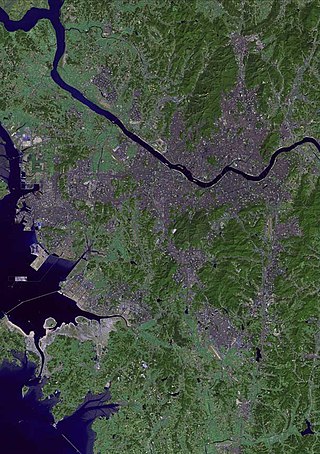
The Han River is a river in the central region of the Korean peninsula,with some of its tributaries and drainage basin in North Korea. It is classified as a national first-class river in South Korea. The Han River currently has eight river islands:Nanjido,Yeouido,Ttukseom,Nodeulseom,Seoraeseom,Sebitseom,Bamseom,and Seonyudo.

Daejeon is South Korea's fifth-largest metropolis,with a population of 1.5 million as of 2019. Located in a central lowland valley between the Sobaek Mountains and the Geum River,the city is known both as a technology and research center,and for its close relationship with the natural environment. Daejeon serves as a hub of transportation for major rail and road routes,and is approximately 50 minutes from the capital,Seoul,by KTX or SRT high speed rail.

North Gyeongsang Province is a province in eastern South Korea,and with an area of 18,420 km2 (7,110 sq mi),it is the largest province in the Korean peninsula. The province was formed in 1896 from the northern half of the former Gyeongsang province,and remained a province of Korea until the country's division in 1945,then became part of South Korea.
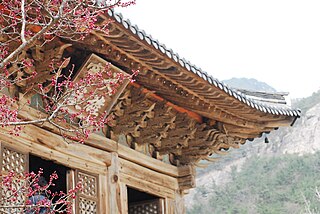
North Jeolla Province,officially Jeonbuk State,is a Special Self-governing Province of South Korea in the Honam region in the southwest of the Korean Peninsula. Jeonbuk borders the provinces of South Chungcheong to the north,North Gyeongsang and South Gyeongsang to the east and South Jeolla to the south.

South Chungcheong Province,informally called Chungnam,is a province of South Korea in the Hoseo region in the southwest of the Korean Peninsula. South Chungcheong borders the provinces of Gyeonggi to the north,North Chungcheong,Sejong Special Self-governing City,and Daejeon Metropolitan City to the east,and North Jeolla to the south.
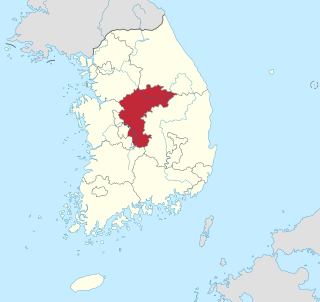
North Chungcheong Province,also known as Chungbuk,is a province of South Korea. North Chungcheong has a population of 1,578,934 (2014) and has a geographic area of 7,433 km2 (2,870 sq mi) located in the Hoseo region on the south-centre of the Korean Peninsula. North Chungcheong borders the provinces of Gyeonggi and Gangwon to the north,North Gyeongsang to the east,North Jeolla to the south and South Chungcheong,Sejong Special Autonomous City and Daejeon Metropolitan City to the west.

Jeolla Province was one of the historical Eight Provinces of Korea during the Kingdom of Joseon in southwestern Korea. It consisted of the modern South Korean provinces of North Jeolla,South Jeolla and Gwangju Metropolitan City as well as Jeju Province. The provincial capital was Jeonju,the current capital of North Jeolla. The entire inland region was called Honam,which is still commonly used today.

Chungju (Korean: 충주) is a city in North Chungcheong Province,South Korea. Uamsan is a mountain located within the outskirts of the city.
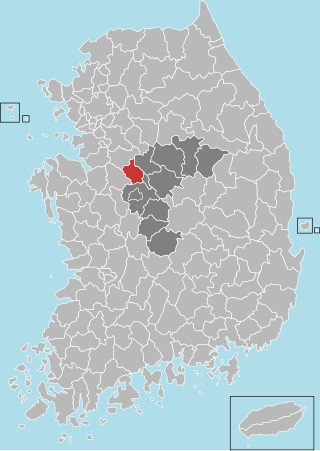
Jincheon County is a county in North Chungcheong Province Province,South Korea.

Boryeong,commonly known as Daecheon,is a city in South Chungcheong Province,South Korea. Boryeong is known around Korea for its beaches,particularly Daecheon Beach,and the annual Boryeong Mud Festival around July. The city's beach-mud is widely touted for its cosmetic properties. As elsewhere along the southwest coast of the Korean peninsula,there are numerous small islands,many of which are connected by ferry to Daecheon Port.
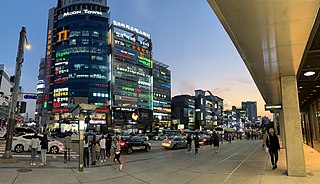
Cheonan is the largest and most densely populated city of South Chungcheong Province,South Korea,and the third largest city in the Hoseo region after Daejeon and Cheongju. Cheonan borders Gyeonggi Province in the north,North Chungcheong Province to the east and southeast,Sejong to the south and Asan and Gongju to the west and southwest.
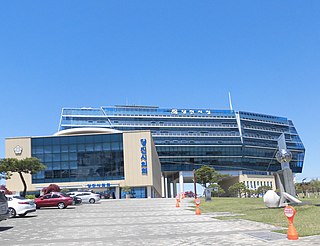
Dangjin is a city in South Chungcheong Province,South Korea. It stands on the south shore of the Bay of Asan. Dangjin borders Incheon,Pyeongtaek,and Hwaseong by sea,and Seosan,Yesan,and Asan by land. Its name means "Tang ferry," and refers to the historic role of Dangjin's harbor in connecting Korea to the other side of the Yellow Sea. This role continues to be important in the city's economy,which relies on a mixture of agriculture and heavy industry. The city has the same Hanja name (唐津市) as Karatsu in Saga Prefecture,Japan.

Ganghwa Island (Korean: 강화도),also Ganghwado,is an island in Ganghwa County,Incheon,South Korea. It is in the Yellow Sea and in an estuary of the Han River.
Stone Bridge may refer to:

The Gochang,Hwasun and Ganghwa Dolmen Sites are the location of hundreds of stone dolmens which were used as grave markers,and for ritual purposes during the first millennium BCE when the Megalithic Culture was prominent on the Korean Peninsula. The sites were designated as a World Heritage Site by UNESCO in 2000. The Korean Peninsula is home to over 35,000 dolmens,accounting for approximately 40% of the world's total;the Gochang,Hwasun,and Ganghwa sites are themselves home to over 1,000 dolmens.
Song In was a civil official in the mid-Goryeo era who became the intermediary founder of the Jincheon Song clan. His highest post was munha pyeongjangsa. This was the highest government position in the period. Song In was responsible for administration,judicial affairs and economy in the district.

Woosuk University is a private university located in Wanju County,North Jeolla Province and Jincheon County,North Chungcheong Province,Republic of Korea.
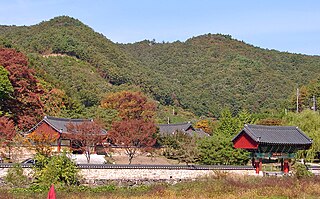
Ssangbongsa (Korean: 쌍봉사),or Ssangbong Temple,is part of the Jogye Order of Korean Buddhism located in rural Jeung Village,Iyang Township,Hwasun County,South Jeolla Province,South Korea.

Cheongpung Bridge is a cable-stayed bridge which crosses the lake formed by Chungju Dam in North Chungcheong Province,South Korea on Route 82 in that region.

Jincheon Gilsangsa is a shrine dedicated to the general Kim Yu-sin (595–673) located in Jincheon-eup,Jincheon County,North Chungcheong Province,South Korea.




















